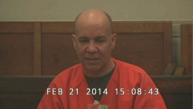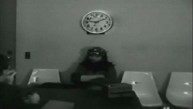A Manhattan judge has ordered jurors in the Etan Patz murder trial to continue deliberations after they passed a note Wednesday, saying they were unable to reach a unanimous decision.
It comes after a motion by the defense to declare a mistrial was denied by the judge.
Speaking to the jury, Supreme Court Justice Maxwell Wiley said, "Given the nature of this case, I don't think you've been considering this case long enough to conclude that you cannot reach a verdict."
The Manhattan district attorney released a statement, saying, "This is a conscientious and hard-working jury and we have every faith that, under the judge's guidance, they can continue to work together to reach a just verdict."
Jurors will continue deliberations Thursday morning. They have spent the past 10 days behind closed doors deciding the fate of Pedro Hernandez, who is charged with killing the six-year-old in 1979.
Earlier Wednesday, jurors asked for a closing argument read-back.
They also spent seven hours deliberating Tuesday but did not ask for a single piece of evidence or legal clarification.
The defense says the jury's inability to reach a verdict is a sign the prosecution has not provided enough evidence to warrant a conviction.
When the judge told jurors to go back to work, the defense moved for a mistrial - but the judge denied the request.
"We have an intelligent, hard-working jury that understands that they would like to resolve this case as much as anyone would like to resolve it, and they can't," said defense attorney Harvey Fishbein. "And therefore, to charge them that they should go back and do what they have been doing is coercive, and that's why we moved for a mistrial."
Etan Patz vanished on May 25, 1979, as he walked two blocks from his parents loft in SoHo to his school bus stop. His body has never been found.
Hernandez was arrested 33 years later, in 2012, after a family member told police Hernandez spoke of having killed a child in New York in the late 1970s.
Prosecutors argued that Hernandez lured Etan to the basement of a bodega, tried to sexually assault him, strangled him, put his body in a bag and a box and dumped it blocks away in an alley.
Their case was built around the defendant's own words - jurors heard four videotaped confessions he gave to authorities, and the testimony of five people who said he confessed to them that he killed someone. However, defense attorneys have noted inconsistencies in the details between confessions. They said Hernandez suffers from serious mental illness and made up his alleged attack.
The defense said convicted pedophile Jose Ramos might be the actual killer. In 1982, police investigators discovered he had a relationship with a woman who frequently walked Etan home from school. Ramos had long been a suspect in the case, but was never charged due to a lack of evidence.
The disappearance of Etan Patz was one of the most infamous missing-child cases in New York history. It made parents across the city and country more aware of the potential dangers facing their children.
View More of NY1's In-Depth Trial Coverage Here.






